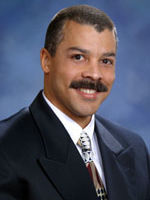
Stephen G. Dunbar, PhD
Dr. Stephen G. Dunbar's research interests are in the areas of tropical marine ecophysiology, coral reef biodiversity and conservation, and marine invertebrate and vertebrate physiology and ecology. Although based at Loma Linda University, in Loma Linda, California, his research takes him to some great places around the globe. With some of the most interesting organisms to work on and some of the most beautiful places on the planet to work in, Dr. Dunbar has what he considers to be one of the best jobs in the world!

